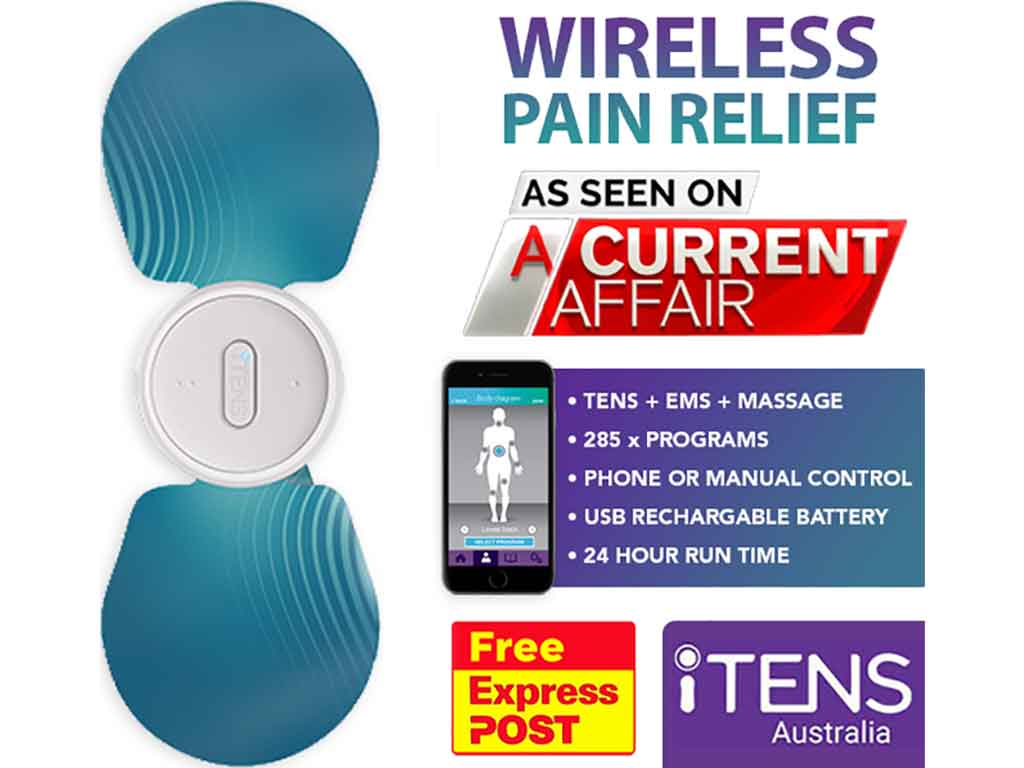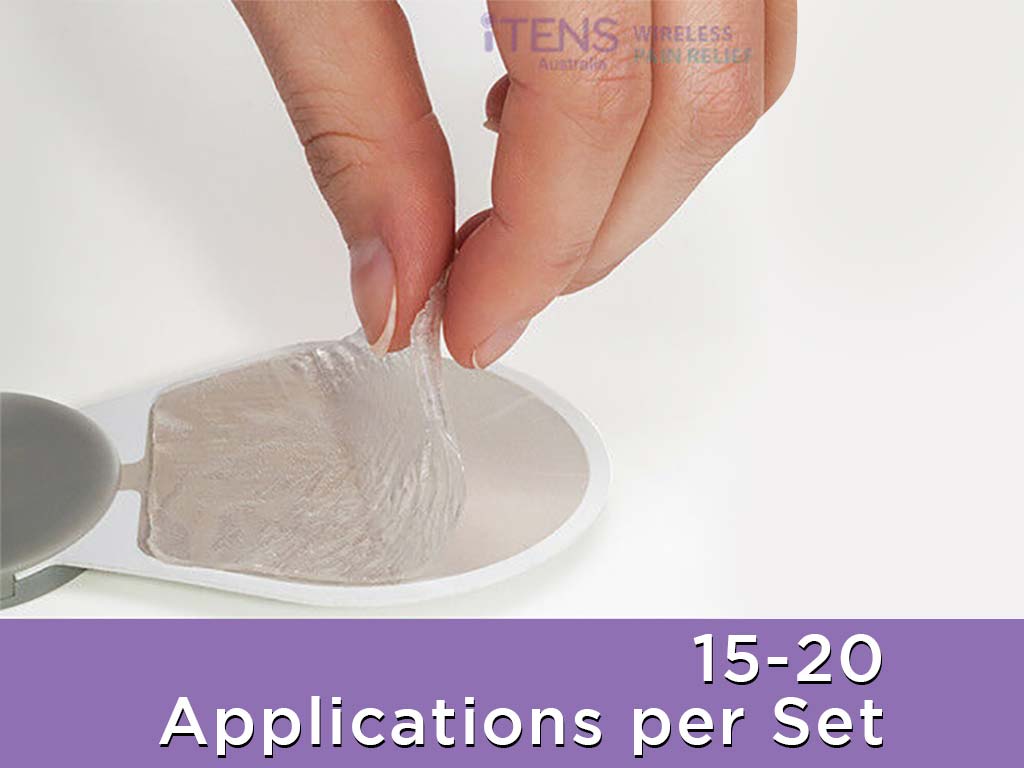
Transcutaneous Electrical Nerve Stimulation or TENS unit for incontinence is a battery-operated device that helps with the management of urinary incontinence. It works by blocking pain signals, improving blood circulation, and stimulating the muscles to contract and relax. The device is easy to use and can be placed on either side of the spine in the lower back area. It provides a non-invasive and drug-free solution for those experiencing urinary incontinence, helping to improve their quality of life.
Healthcare professionals commonly employ various methods to treat incontinence. A few examples include medication, pelvic floor exercises, and lifestyle changes. However, these options may not be fully effective or may have unintended side effects for some individuals. Having alternatives, such as TENS units, can be beneficial. To learn more about the machine, the following sections will present what it is, how it works, and the proper pad placement.
What is a TENS Unit for Incontinence?
A TENS unit for incontinence is a medical device that produces mild electrical pulses to the nerves. It decreases the symptoms of the condition. Individuals with bladder or bowel control issues use it as a non-invasive and drug-free treatment option. People can use this method alongside manual exercises and lifestyle modification. This combined strategy aims to strengthen the muscles and improve control.
People have the option to choose from various types of electrical stimulation units. The most common are wired and wireless models. The former typically involves a small control unit connected to external electrode pads via cables. On the other hand, the latter utilises Bluetooth technology to transmit the electrical impulses from the control unit to the pads, eliminating the need for cords.
There are many options for TENS machines available in the market. Individuals may purchase these products online, in pharmacies, or in medical supply stores. The price range is between $30 and above $300, depending on its features. Interested individuals may read the customer reviews and consult healthcare professionals about which product suits their needs.
Types of Incontinence
- Stress incontinence: when pressure on the bladder causes leakage when coughing, laughing, or exercising.
- Urge incontinence: a sudden, intense need to urinate followed by involuntary bladder leakage.
- Overflow incontinence: when the bladder does not empty fully, leading to frequent or constant dribbling of urine.
- Mixed incontinence: a combination of different types of incontinence, such as stress and urge incontinence.
- Functional incontinence: when physical or mental limitations prevent someone from reaching the toilet in time.
- Transient incontinence: temporary incontinence due to medication or a medical condition that can be treated and resolved.
- Nocturnal incontinence: involuntary urination during sleep, often experienced by children.

Mechanisms of Action on How a TENS Unit for Incontinence Works
A TENS unit for incontinence works through various mechanisms that help alleviate the symptoms. One mechanism is the Pain Gate Control Theory. It suggests that the electrical impulses from TENS can close the neural “gate” that allows pain signals to reach the brain. This can reduce the perception of bladder pain associated with certain types of incontinence and pelvic floor disorders.
Another way a TENS unit works is by enhancing blood circulation in the pelvic area. It promotes tissue oxygenation and nutrient supply. This can aid in nerve repair and function. This may potentially restore or improve the neural pathways responsible for bladder control and reduce episodes of incontinence.
Additionally, a TENS device can stimulate the pelvic floor muscles, which are crucial for urinary incontinence. By causing the pelvic muscles to contract and relax in a controlled manner, TENS may help strengthen the pelvic floor. This can contribute to improved urinary control and reduced instances of incontinence. Overall, these mechanisms work together to provide relief and improve symptoms for individuals with incontinence.
Frequencies and Intensities
Frequency refers to the number of pulses or cycles of electrical current per second. The typical frequencies in TENS therapy range from 1 to 150 Hz. Lower frequencies, such as 1-5 Hz, are suitable for chronic pain conditions. Meanwhile, higher frequencies, such as 80-150 Hz, are for acute pain management.
Intensity is the strength or power of the electric currents, measured in milliamps (mA). It influences how deeply the electrical signals penetrate the body. Generally, TENS therapy starts with a low intensity and gradually increases to a comfortable level. Finding the right intensity is essential for maximising the benefits of TENS.

Pad Placement When Using a TENS Unit for Incontinence
When using a TENS unit for incontinence, placing the pads in the correct position is essential. The pads should be placed on either side of the spine, in the lower back area. They should be at the level of the sacral nerves, which are located at the base of the spine. This placement allows the electrical stimulation to reach the nerves that control the bladder and bowel urgency.
To achieve the best results, the pads should be at least two inches apart to avoid any overlapping of the electrical signals. Also, ensuring the skin is clean and dry before applying the electrodes is vital. Additionally, the pads must be securely attached to the skin to prevent them from moving during use.
Surface electrode pads are disposable. It is recommended to replace them regularly to ensure safe treatment and avoid potential adverse effects. As such, the life expectancy of the patches can vary depending on the quality of the material. Generally, it can last up to 20 to 30 applications.
Signs to See a Doctor
Some signs indicate the need to see a doctor when experiencing incontinence. Firstly, consult a professional if there is a sudden onset or change in incontinence. Sudden or unexpected changes in bladder control can be a sign of an underlying medical issue. Secondly, seek help if the condition interferes with daily activities or significantly impacts the quality of life.
Thirdly, visit a doctor if there are accompanying symptoms or discomfort. Symptoms, such as pain, frequent urination, and blood in the urine, could indicate a more serious issue. Lastly, discomfort such as irritation, burning sensation, or unusual odours should also be discussed with a professional.
Conclusion
In summary, a TENS unit for incontinence provides a non-invasive solution with electrical pulses to address symptoms. By closing the neural “gate” for pain signals, it reduces bladder pain associated with incontinence. The device also enhances blood circulation in the pelvic region, supporting nerve repair. Additionally, it stimulates pelvic floor muscles, contributing to improved urinary control. This drug-free approach offers relief for those dealing with incontinence, presenting a versatile and effective option to enhance overall well-being.
Proper electrode placement is crucial. One must place the pads on the lower back, each side of the spine, at the level of the sacral nerves. Ensure a minimum two-inch gap between pads to prevent signal overlap. Clean, dry skin is crucial for pad application, and secure attachment prevents movement during use. If incontinence suddenly changes, affects daily life, or comes with pain, frequent urination, or unusual odours, seeking medical advice is essential.







